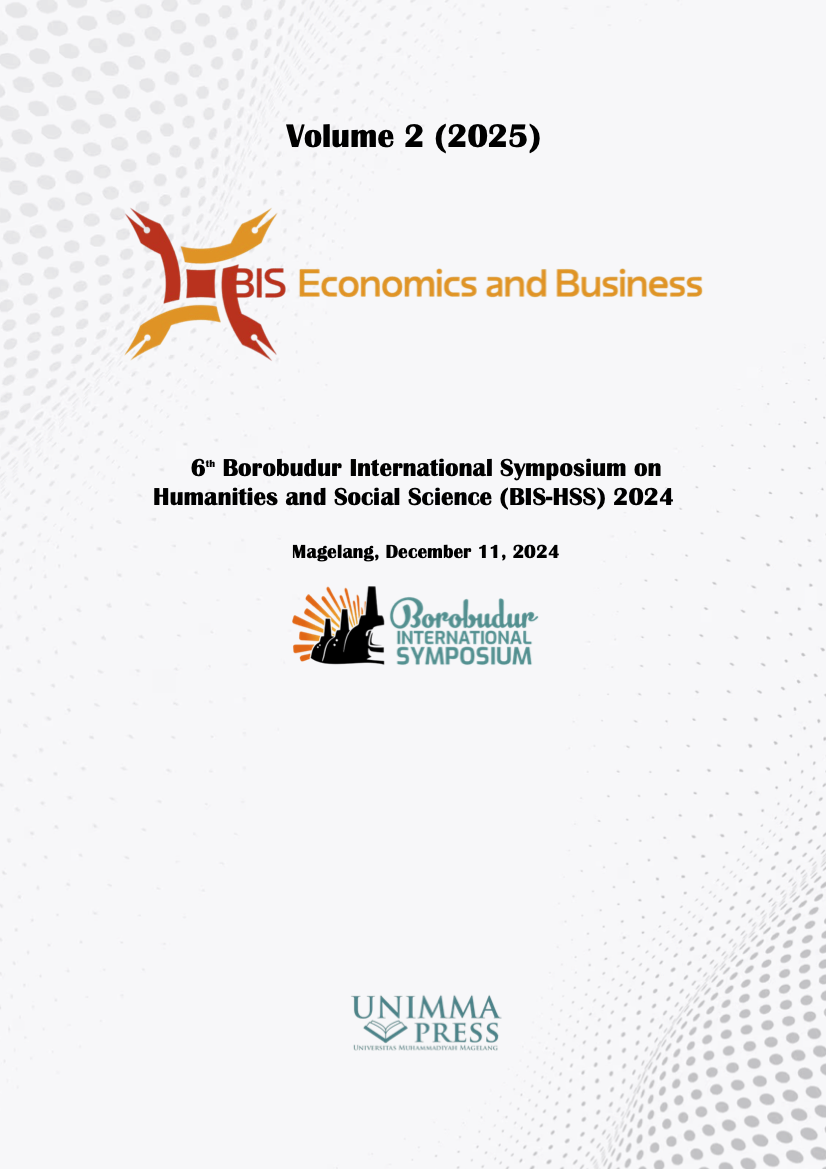Inclusive health and economy: strategies for empowering persons with disabilities in sustainable development
Keywords:
SDGs, disabilities, inclusion strategies, SDGs, disabilities, inclusion strategiesAbstract
Inclusion-based health and economic strategies are strategic approaches that ensure the full participation of people with disabilities in sustainable development, aligning with Sustainable Development Goals (SDGs) No. 8, which advocates for decent work and economic growth, and SDGs No. 10, which focuses on reducing inequalities. Key challenges faced by individuals with disabilities in accessing healthcare and economic opportunities include discrimination, structural barriers, and a lack of supportive policies. Strengthening the role of people with disabilities can be achieved through holistic strategies, such as providing universal access to adaptive technologies, developing market-driven skill training programs, and implementing affirmative policies oriented toward inclusivity. This study also explores the contribution of the private sectors and civil society in creating an inclusive ecosystem that fosters equality. Through cross-sectoral analysis, it highlights that investments in inclusive healthcare programs and creative economies not only enhance the quality of life for people with disabilities but also contribute to overall economic growth. Thus, inclusion-based approaches are pivotal to ensuring sustainable development involves all layers of society equally, leaving no one behind.
References
Colberg, S. R., Sigal, R. J., Fernhall, B., Regensteiner, J. G., Blissmer, B. J., Rubin, R. R., Chasan-Taber, L., Albright, A. L., & Braun, B. (2010). Exercise and type 2 diabetes: The American College of Sports Medicine and the American Diabetes Association: Joint position statement. Diabetes Care, 33(12). https://doi.org/10.2337/dc10-9990
[2] Cubukcu, D., & Paraoglu, P. (2020). The Effects of Neuro-Developmental Treatment Based Rehabilitation on Gross Motor Function in Children with Spastic Cerebral Palsy Spastik Serebral Palsili Çocuklarda Nörogelişimsel Tedaviye Dayalı Rehabilitasyonun Kaba Motor. 10(1), 47–52. https://doi.org/10.5222/buchd.2020.27147
[3] Dinsos Kabupaten Pekalongan. (2023). PEMKAB PEKALONGAN BERUPAYA BANTU PENYANDANG DISABILITAS. Pemerintah Kabupaten Pekalongan. https://pekalongankab.go.id/website/berita/2780-pemkab-pekalongan-berupaya-bantu-penyandang-disabilitas
[4] Harbourne, R. T., Dusing, S. C., Lobo, M. A., McCoy, S. W., Koziol, N. A., Hsu, L.-Y., Willett, S., Marcinowski, E. C., Babik, I., Cunha, A. B., An, M., Chang, H.-J., Bovaird, J. A., & Sheridan, S. M. (2021). START-Play Physical Therapy Intervention Impacts Motor and Cognitive Outcomes in Infants With Neuromotor Disorders: A Multisite Randomized Clinical Trial. Physical Therapy, 101(2). https://doi.org/10.1093/ptj/pzaa232
[5] Haskell, W. L., Lee, I. M., Pate, R. R., Powell, K. E., Blair, S. N., Franklin, B. A., MacEra, C. A., Heath, G. W., Thompson, P. D., & Bauman, A. (2007). Physical activity and public health: Updated recommendation for adults from the American College of Sports Medicine and the American Heart Association. Medicine and Science in Sports and Exercise, 39(8), 1423–1434. https://doi.org/10.1249/mss.0b013e3180616b27
[6] Ibrahim, R. C., Polii, H., & Wungouw, H. (2015). Pengaruh Latihan Peregangan Terhadap Fleksibilitas Lansia. Jurnal E-Biomedik, 3(1). https://doi.org/10.35790/ebm.3.1.2015.8074
[7] Khairina, E., Purnomo, E. P., & Malawnai, A. D. (2020). Sustainable Development Goals: Kebijakan Berwawasan Lingkungan Guna Menjaga Ketahanan Lingkungan Di Kabupaten Bantul Daerah Istimewa Yogyakarta. Jurnal Ketahanan Nasional, 26(2), 155. https://doi.org/10.22146/jkn.52969
[8] Kisner, C., & Colby, L. A. (2012). Pthomegroup Pthomegroup (M. M. Bibli (ed.); 6th ed.). davis company.
[9] Krisnawati, D., & Anggiat, L. (2021). Terapi latihan pada kondisi stroke: kajian literatur. Jurnal Fisioterapi Terapan Indonesia, 1(1), 1–10.
[10] Mar’iyah, K., & Zulkarnain. (2021). Patofisiologi penyakit infeksi tuberkulosis. Prosiding Seminar Nasional Biologi, 7(November), 88–92. https://doi.org/10.24252/psb.v7i1.23169
[11] Muller, J. P., Gonçalves, P. A. G., Fontoura, F. F. da, Mattiello, R., & Florian, J. (2013). Applicability of the London Chest Activity of Daily Living scale in patients on the waiting list for lung transplantation. Jornal Brasileiro de Pneumologia : Publicacao Oficial Da Sociedade Brasileira de Pneumologia e Tisilogia, 39(1), 92–97. https://doi.org/10.1590/s1806-37132013000100013
[12] Novrianda, H., Shar, A., Fitri, M., & Muttaqin, F. (2023). Implementasi Teknologi Pemasaran Digital Dalam Peningkatan Penjualan Produk-Produk Kelompok Disabilitas Di Kota Bengkulu. Kumawula: Jurnal Pengabdian Kepada Masyarakat, 6(2), 263. https://doi.org/10.24198/kumawula.v6i2.42532
[13] Rizal, S. (2024). Analisis Pengaruh Digital Marketing Dalam Memberdayakan Usaha Mikro, Kecil, dan Menengah (UMKM) Penyandang Disabilitas di Kota Makassar. Madani: Jurnal Ilmiah Multidisiplin, 2(7), 765–778.
[14] Tan, W. (2021). Kondisi Tenaga Kerja Penyandang Disabilitas : Tantangan Dalam Mewujudkan Sustainable Development Goals. Rechtidee, 16(1), 18–36. https://doi.org/10.21107/ri.v16i1.8896
Downloads
Published
Conference Proceedings Volume
Section
License

This work is licensed under a Creative Commons Attribution-NonCommercial 4.0 International License.

